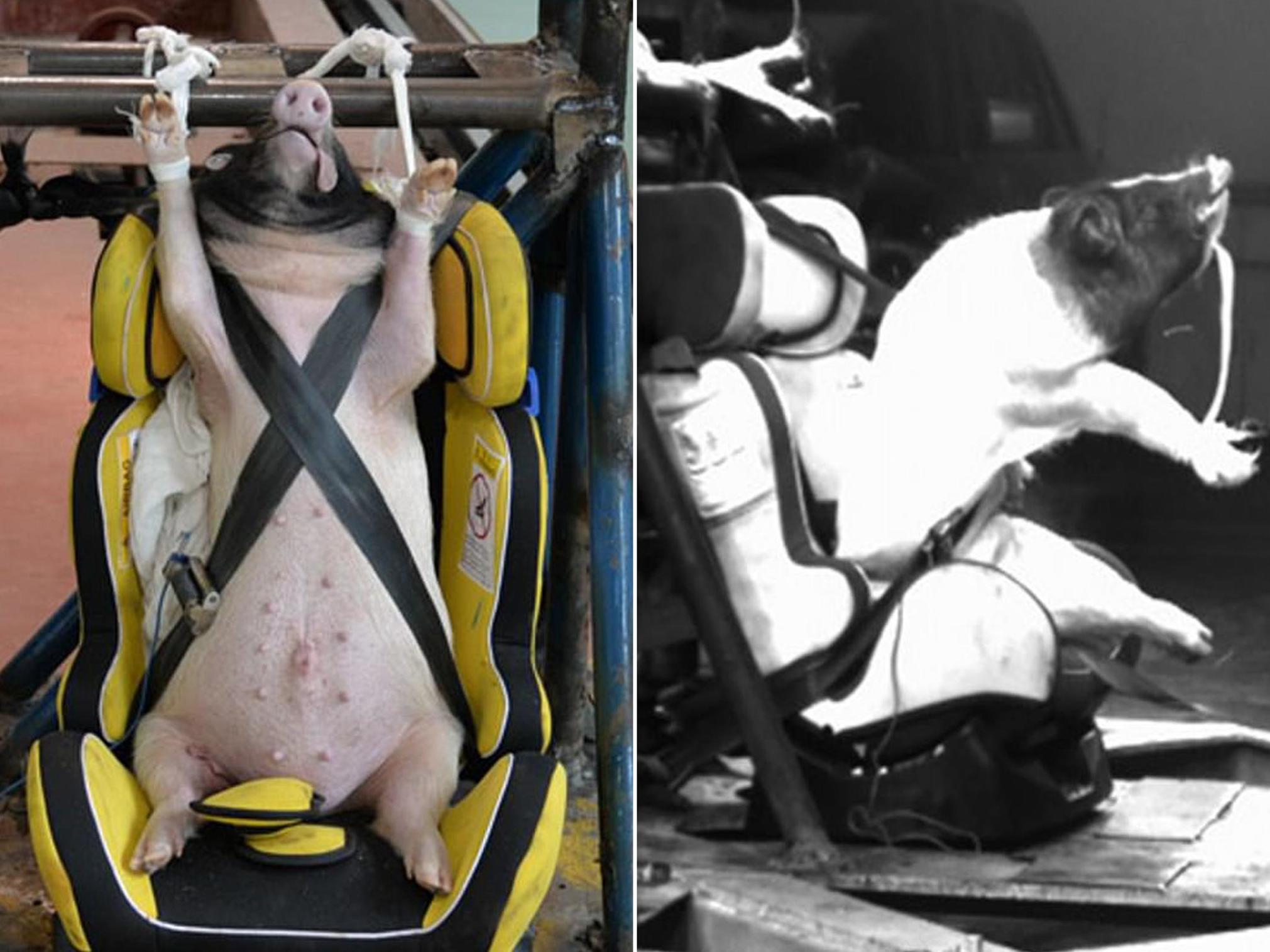Live pigs killed and ‘mangled’ as scientists in China use them as crash-test dummies
Researchers hint they may conduct more experiments that left animals painfully injured and bloodied

Your support helps us to tell the story
From reproductive rights to climate change to Big Tech, The Independent is on the ground when the story is developing. Whether it's investigating the financials of Elon Musk's pro-Trump PAC or producing our latest documentary, 'The A Word', which shines a light on the American women fighting for reproductive rights, we know how important it is to parse out the facts from the messaging.
At such a critical moment in US history, we need reporters on the ground. Your donation allows us to keep sending journalists to speak to both sides of the story.
The Independent is trusted by Americans across the entire political spectrum. And unlike many other quality news outlets, we choose not to lock Americans out of our reporting and analysis with paywalls. We believe quality journalism should be available to everyone, paid for by those who can afford it.
Your support makes all the difference.Scientists in China have been condemned for using live pigs as crash test dummies, leaving them dead or painfully injured.
Seven young animals were killed after being strapped onto sleds and slammed into a wall at 30mph.
Eight others suffered injuries including bleeding, broken bones and internal bruising. The researchers who examined the bodies afterwards found that lungs were injured most frequently, followed by spleens, and livers.
The young pigs were starved for 24 hours and denied water for six hours before the tests.
The Chinese scientists said they used young pigs to develop seatbelts for children because the animals’ anatomic structure was similar to that of human six-year-olds, and hinted they might conduct similar experiments in future.
But British experts who defend animal research said they could not justify the experiments.
Chris Magee, of the UK-based Understanding Animal Research group, told The Independent he couldn’t imagine such tests being useful in any country as lots of crash-test dummies already exist.
“I don’t understand why they would feel the need to do this. In this country it would go through an ethical review,” he said.
The research, reported in the International Journal of Crashworthiness, involved testing three different seatbelt modifications: two parallel belts restraining chest and abdomen; one diagonal belt and a lap belt; and crossed diagonal belts.
The animals, which were given an anaesthetic to reduce “excitement and stress”, had electrodes inserted into their abdomens, according to animal-rights group Peta.
“The injuries sustained by the tested subjects resulted in seven deaths. The common injury types included abrasion, contusion, laceration, bleeding and fracture,” the journal’s report said.
Peta condemned as “barbaric” the tests that left the animals “bloody, bruised, and mangled”.
Companies today use advanced technology, such as clinical human studies, advanced computer modelling, 3D medical imaging and sophisticated mannequins, for crash research, the group said.
“Other researchers have also used human cadavers and virtual reality (digital crash dummies) for the same purpose. In the 21st century, every car company on the planet should already have adopted these methods.”
The group has contacted the experts to ask them to stop using live animals in such “crude” tests. “No regulations exist there that would require such horrific experiments to be performed,” Peta said.
The US ended the practice of using pigs – which are thought to be more intelligent than dogs – and other animals in crash tests in the 1990s.
The seven scientists, from the Institute for Traffic Medicine at the Third Military Medical University – which The Independent has contacted for comment – insisted they had followed US guidelines on using laboratory animals and said their study had been approved by an ethics committee.
They carried out post-mortem examinations to determine exactly how the pigs had been injured and killed.
“The results may be useful to learn the paediatric thoracoabdominal injuries, while the further studies concerning the paediatric injuries should be done in the future,” the journal’s report said.
Mr Magee added: “An experiment like this would be very unlikely to pass the UK’s strict ethical review process which must be satisfied before a licence is granted.
“When pigs are used in UK research, it is primarily to study and treat animal diseases, but also human cardiovascular conditions and nervous disorders.”
Join our commenting forum
Join thought-provoking conversations, follow other Independent readers and see their replies
Comments